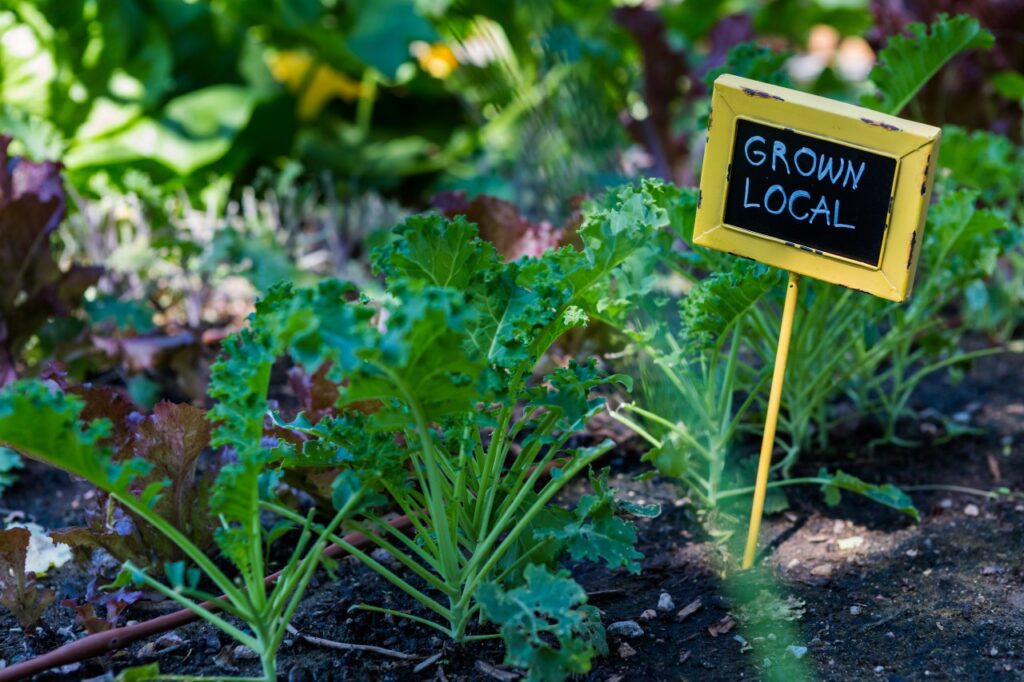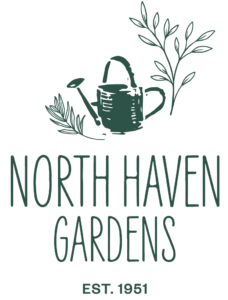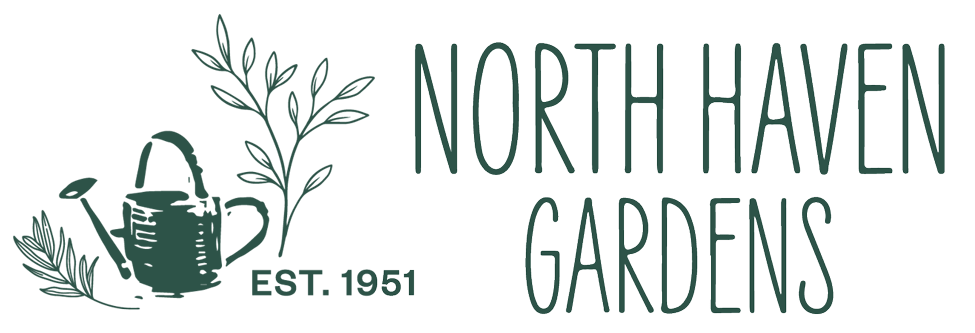
At North Haven Gardens, we are passionate about gardening and about stocking fresh herbs and vegetables for any gardener wanting to take control of what’s in the garden…and thus what’s on the dinner plate. We also pride ourselves on our knowledgeable staff and library of learning resources to help all levels of gardeners grow with confidence.
Locating Your Gardening Plot
First, you’ll need to select a location for your vegetable garden. An edible garden will need at least six hours of full sun every day, so this is the most important consideration in choosing where to locate your garden. You’ll also want easy access to a garden hose or spigot, and if you plan to compost, it’s convenient to locate the garden near the compost bin. One of the questions we often get is, “Do you design and install gardens?” While we don’t currently offer full garden design services, we do have a fee-based Garden Coach program, with talented, experienced staff who can meet with you privately, either at home or at NHG, to walk you through vegetable (as well as landscape and ornamental) gardening.
Preparing the Soil
Second, you’ll need to prepare the soil. If you are gardening in raised beds or containers, the Mayer Materials ‘Raised Bed Mix’ is a nutrient—rich soil to use as a filler. If you’re planting in the ground, amend the soil with products like Espoma’s ‘Bio-Tone’ and Vital Earth’s ‘Garden Soil Builder’ to enrich the soil. Depending on what you’ll be growing, you may also need specialized soil amendments. NHG’s Garden Advisors are always available to help you get started.
Selecting Plants and Seeds
At NHG, we are experts at knowing the weather and timing for growing from seed then transplanting seedlings into the garden, or sowing seeds directly into the garden beds) or already-rooted transplants that can jump-start your growing season. We can also help you select related products like fertilizers (both organic and synthetic), plant supports, and shade cloth for that hot summer sun to come.
As you install your garden, you’ll also want to plant pollinator plants in and around your edible plants and seedlings. Flowering plants not only beautify the garden, they also attract the bees and other pollinators that boost each plant’s productivity. Some of the best flowers for attracting pollinators are annual marigolds, cosmos, sunflowers, and zinnias. There are also flowering perennials that come back every year – many of them drought-tolerant Texas natives. Blooming perennials can be a long-term, cost-effective addition to any part of the garden.
Understanding When To Harvest…and Start Again
You must know when it’s time to harvest your produce. Different crops ripen at different times throughout the season. The weather in the Metroplex offers a unique opportunity to garden and harvest almost year-round, so the end of one harvest signals the opportunity to prepare for a new crop. At NHG, we have the information you need to know when it’s time to harvest and what to plant next.
Come Visit Us Today
Edible gardening doesn’t just reap delicious rewards. It’s a great way to nurture children’s interest in gardening and involve them in nature, and a great bonding activity for family and friends. If you want to know more about vegetable gardening, sign up for NHG’s weekly e-blast, check our website for helpful videos and instructional handouts and project lists, and watch our and Facebook page. Better yet, come visit us at 7700 Northaven Road and let us help grow your love of gardening.
Featured Image: Arina P Habich / Shutterstock

